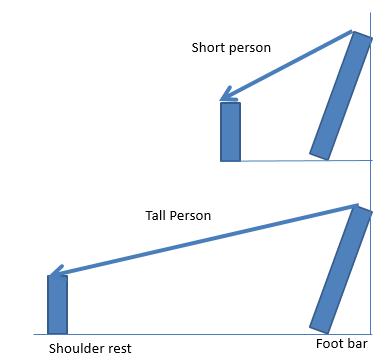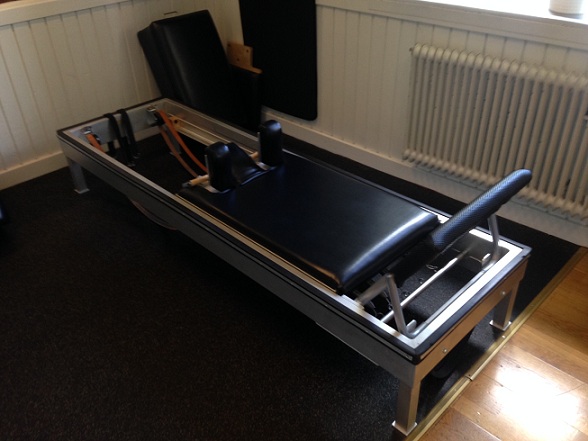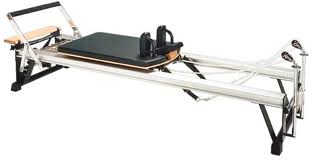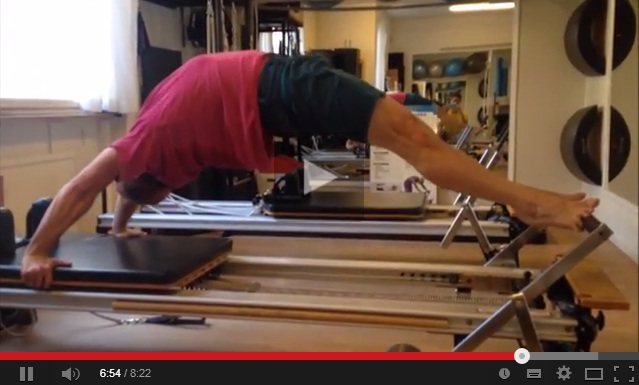We Pilates practitioners have certainly heard about that camp, that finds that using Gratz original equipment is superior, and even necessary to do Pilates correctly.
Anyone subscribed for some time knows that I always welcome a difference in opinion. As for me, I do not agree with this point of view. But my esteemed, charming and lovely friend Andrea does. So, we are duking it out in public in the form of a friendly on-line debate.
Let´s constrain ourselves to the reformer, though there is much to be said for the other apparatus. (Like what is the point of a non-adjustable ladder barrel? I and my private parts truly want to know!)
I was watching a video of a well-respected Pilates authority on the importance of using Gratz apparatus. who emphatically stated that Gratz was the only apparatus that would enable the traditional work to be done correctly, and with flow. One reason was that the height and angle of the foot bar in relation to the carriage ensures that a specific and correct knee alignment would be present, which in turn facilitates the use of the stomach muscles.
I find the knees does not need a specific alignment, to use the stomach muscles as much as the body needs conscious control and awareness. But even besides this, the statement is mathematically untrue.
Given a fixed position of the foot bar relation to the carriage, the fact that every individual is unique in dictates a unique knee alignment for that very individual. The ‘specific’ angle required will be present for only a very few.
Another assertion of the tutorial was that the specific heights of the shoulder blocks and footbar ensured a certain and necessary angle when positioned with hands on blocks and feet on bar. Again, this is mathematically untrue, the constant heights of both parts guarantees a unique angle for each individual, and one just cannot argue with math. Have a look:
This all says nothing about the superiority and necessity of Gratz. It is to disregard arguments supporting the superiority of Gratz that are illogical and untrue. And after having done so, I find that what we are left with is our own personal tastes that are developed through experience.
I do have some experience with Gratz, along with the excellent hand-made apparatus of Fredrik Prag, which I found to be rather equivalent, but I will use the word Gratz. The high quality craftsmanship present is undeniable, and I like to use it.
For me the most enlightening aspect of Gratz is that purposeful absence of tension in the springs in the last few centimeters that the carriage travels toward the foot bar. As they say, at this point ‘it’s all you, baby’ and there is no faking it. This feature enlightened my performance of such exercises as long stretch, the elephant, and knee stretches. From Fredrik I learned that even in footwork, although one cannot realistically pull one’s self in those last few centimeters, that ‘sense’ of pulling into the bar enhances one’s sensitivity for the work. Without doubt, the quality of my practice benefitted thanks to my Gratz experience, and the instruction that I received. Thank you Gratz!
But in everything there is a balance, and after this blushing review of the Gratz, I can state confidently that there are a few things that I find less optimal.
Stirrups
The stirrups are to me a clumsy, hard and inelegant part of the reformer because they hang and clang when not in use. Using the hard stirrups in the hand make for a less sensitive transition from body to machine. Thick cloth handles found on the modern reformers work well for both the hands and the feet, and I find this to be a great improvement.
Nonadjustable foot bar
The fact that the foot bar can only be adjusted as up or down is an unnecessary lack of variability. Let’s face it, the snake with the foot bar at full height is uncomfortable for many, and impossible for many more. But most are capable of performing the snake with the foot bar higher than its lowest position. So I have an idea, why not adjust the height of the foot bar according to the ability of the person? Hey, wait a minute, that is not my idea, it already exists on most modern reformers – and that makes good sense. Adjustability also comes in handy in exercises such as the back bend and semi-circle.
Springs
The Gratz reformer sports four full-strength springs whose quality I find superior to the modern reformers that I have used, because they are rigid and unforgiving, giving better feedback. But modern reformers have a half and even a quarter strength spring, and they have value. Finely adjusting tension according to one’s present sensitivity and need is good, and valuable feedback can be attained by doing so. I find less tension helpful when focusing on technique in, for example, arms pulling straps. Encouraging the student to work from the center with less shoulder and neck tension is easier with low resistance, and it is fun to graduate to a higher resistance with greater skill.
Size
Gratz reformers can be too short, limiting the amount one can take the carriage out. For tall people -forget about it (a colleague who trains professional basketball players agrees wholeheartedly). I am not tall, but it gives me great joy to go ‘all the way’ in such exercises as long stretch, semi-circle and back bend, and I find a full stretch necessary in order to attain that beautiful resonance through the body that is possible. And the wooden block, what is that evil little thing placed to limit movement further? The reformer is short enough, so I think that we should collect all the wooden blocks in the world and burn them in a spectacular bonfire and dance around it in celebration of a of an eternal full stretched body! (Ok, I know I am in trouble with that one and Andrea promises to get me on this one, so let’s wait to hear from her next week!)
Let’s talk about the flow mentioned above. I have seen videos of people synchronously performing on Gratz reformers, moving quickly and sequentially while changing the foot bar with their feet and the springs in teaser position. It was in some ways admirable, but I found them to use much more tension than necessary and the movement had a militaristic quality. They lacked an intelligent flow within that comes with sensitive work over time. To me, flow occurs in the individual exercise as well as in a series, having little to do with speed, movement protocols or the apparatus itself.
Finally, doing Pilates ‘correctly’, even traditional Pilates, is something to be forever explored and never attained while one builds strength, subtlety and intelligence – this is not dependent on a specific brand of apparatus. Inevitably one will be drawn to a certain type. But valuable feedback is to be had with open-minded use of others, benefitting the serious student who truly wishes to enjoy the depth of Pilates.
Check out the YouTube video I made to accompany this article.




